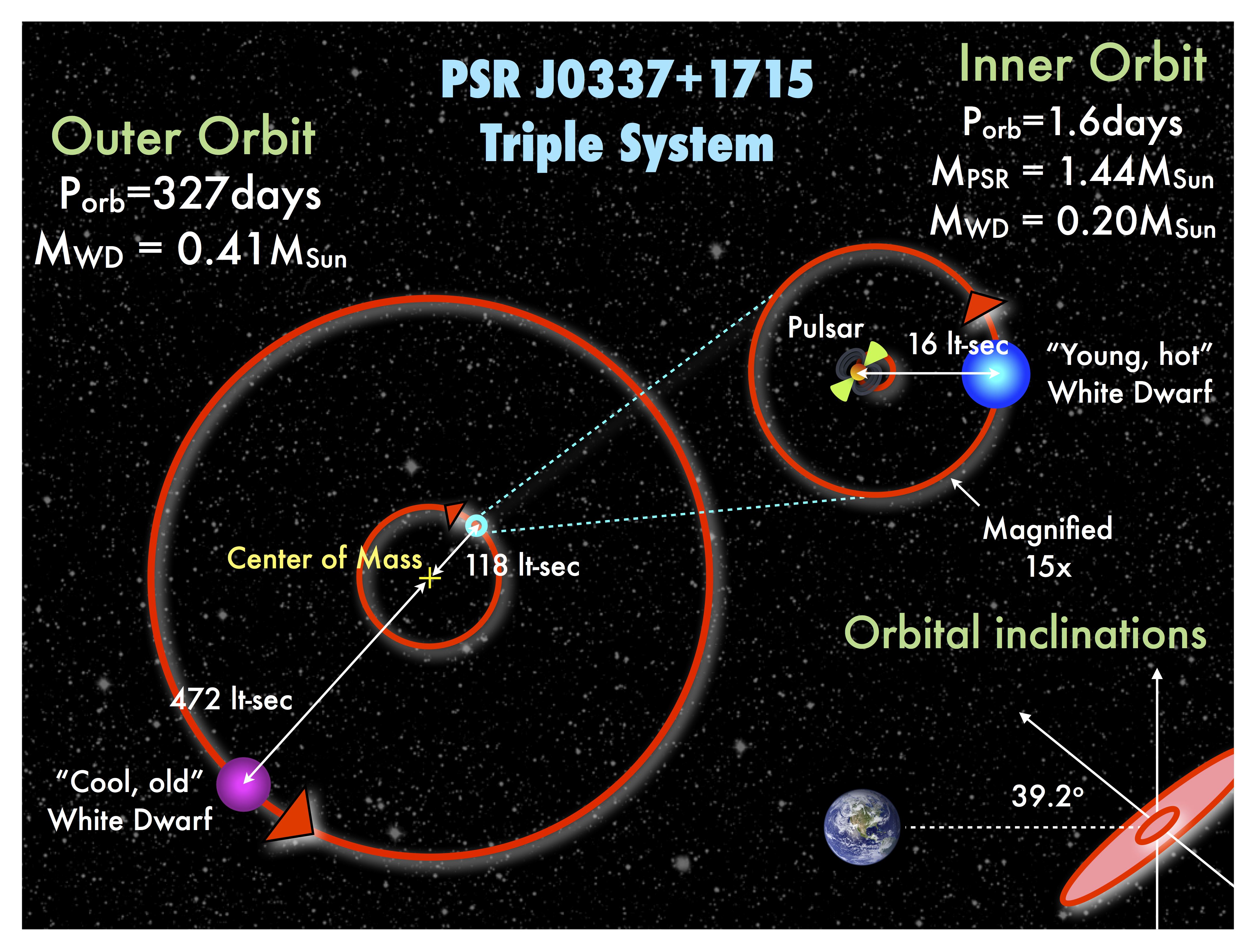Daily Image
07-01-2014Pulsar with two white dwarf companions promises to test theories of gravity
| Submitter: | Anne Archibald and Jason Hessels |
| Description: | Using the Green Bank Telescope, our team has discovered a new fast-spinning pulsar that is unique: it is closely orbited by one white dwarf, and more distantly orbited by a second. The complex interactions of these three bodies have been measured by an intensive campaign of timing observations with the Arecibo observatory, with the Green Bank telescope, and - taking almost daily observations - with ASTRON's Westerbork Synthesis Radio Telescope. Fitting theoretical models to these data has allowed us to almost completely determine the geometry of the system (see image) and obtain very precise measurements of the masses of the stars. For example, we measure a pulsar mass of 1.4378 +/- 0.0013 solar masses. We plan to use our measurements of this system to test theories of gravity. Einstein's theory of gravity predicts objects should fall the same way no matter how compact they are (roughly speaking, the "Strong Equivalence Principle"). Almost all other theories of gravity predict that very compact objects should begin to deviate. In this new system, we have the extremely compact pulsar and the less compact inner white dwarf falling in the gravity of the outer white dwarf. If they fall differently, we should see it in our measurements. If they fall in exactly the same way, then theorists will need more ingenuity to come up with new theories of gravity that can match Einstein's in this orbiting laboratory. The discovery and timing of this new system are described in Ransom et al. 2014 in the January 5th online version of Nature (also arXiv). |
| Copyright: | JWTH/ASTRON |
| Tweet |  |
